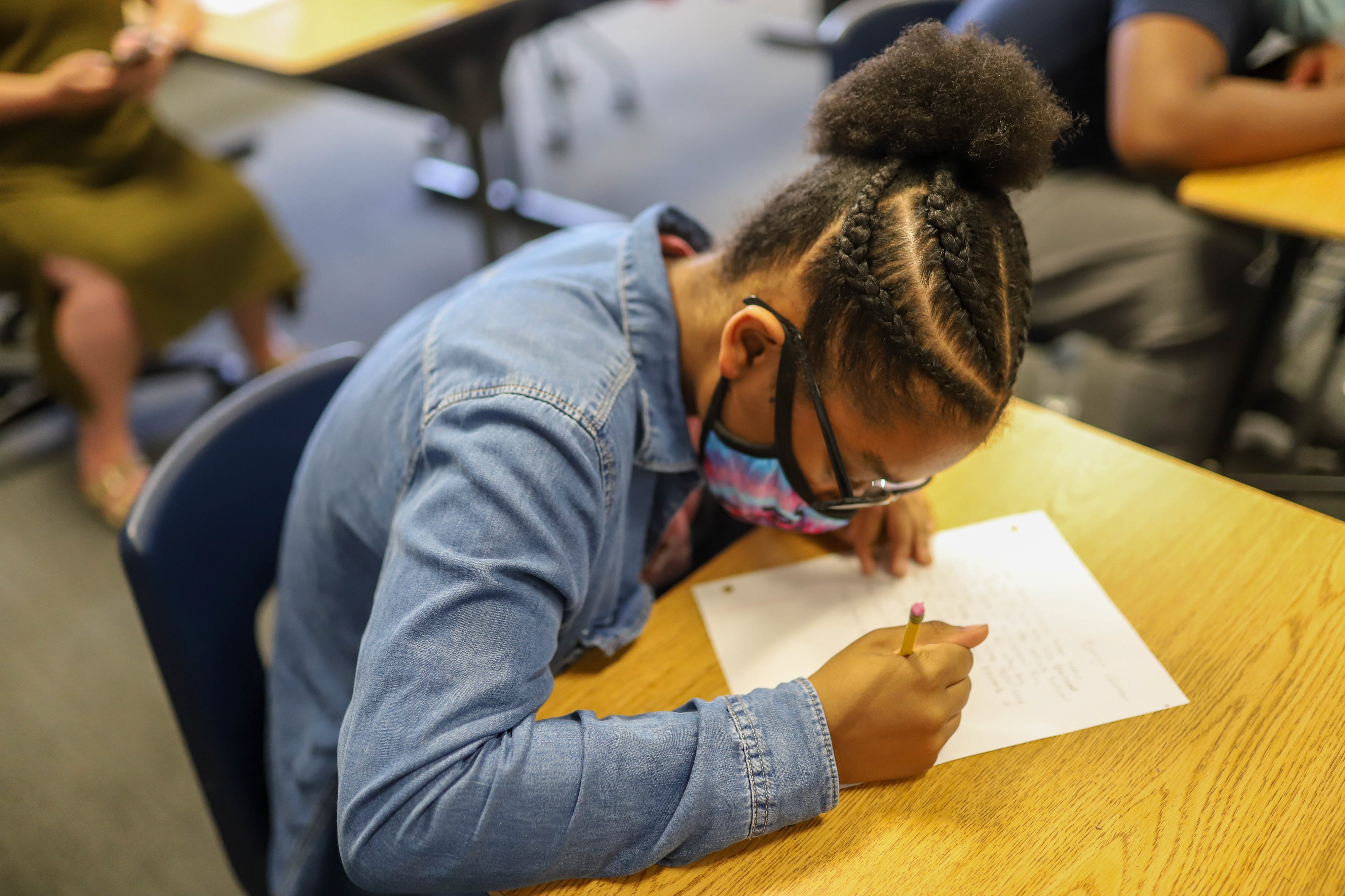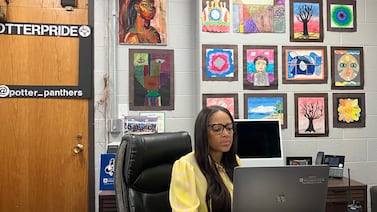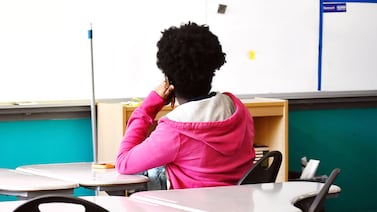Michiganders hope schools will spend federal pandemic relief funds on expanded tutoring programs to help students who have fallen behind and on mental health resources, according to a new poll released this week.
The poll by EPIC-MRA of Lansing, provided exclusively to the Free Press and Chalkbeat, also found respondents want the state’s public schools to invest in everything from upgrading heating and cooling systems to more counselors, to investing more in the quality of school lunch. But largely, Michiganders appear to want to spend the recent COVID relief funds windfall on academic intervention to help students recover from the pandemic and enriched mental health services.
Districts across Michigan have $6 billion to spend, the largest single influx of federal education dollars in state history. The money is meant to ease the budget headaches and blows to academic achievement and mental distress created by the pandemic. Some of it has already gone out the door, but much of it hasn’t as districts work to determine their remaining priorities.
“Where are our social workers, and where are our nurses?” asked Monique Bryant, a parent in the Detroit Public Schools Community District. “You have kids with asthma, you have kids with other types of mental illnesses that require that they take medication, and there aren’t trained professionals in the building.”
The poll surveyed 600 people between Jan. 15 and Jan. 20, and has a margin of error of plus or minus 4 percentage points.
The poll found:
- 82% of the likely voters polled said expanding tutoring programs to help students struggling with classwork is important.
- 74% responded that additional mental health support for students and staff is important.
- 71% supported hiring additional staff members and educators to reduce class sizes.
- 71% supported upgrading HVAC systems in schools.
- The results showed that political views may influence how respondents prioritize spending. Voters who were more likely to vote liberal supported improved ventilation, school building renovations and hiring additional staff. Voters who were more likely to vote conservatively gravitated toward expanded tutoring options.
- Parents overwhelmingly supported mental health resources over non-parents. A larger proportion of parents also supported additional hiring of staff and teachers over nonparents.
Pollster Bernie Porn said parents, who have had a front-row seat to the damage of the past two years, were more likely to support spending on all types of improvements.
“There’s much more support for all of these among parents than there is among nonparents,” Porn said.
Are districts investing in what Michiganders want?
Research shows that tutoring, particularly high dosage tutoring where students receive multiple 30- to 60-minute sessions per week, is effective in helping students who have fallen behind, according to a report from the Annenberg Institute at Brown University.
Michigan districts so far plan to spend $185 million to reduce learning loss, according to state data showing district COVID relief spending plans. The true figure will likely be larger after districts refine their plans.
In this category of spending, many districts are paying for tutors. About 10% of districts reported to the state that paying for tutors was among their top five priorities.
Detroit’s district, for example, plans to spend $14 million on a tutoring program from Beyond Basics over two years, to cover literacy tutoring in 11 high schools.
In neighboring Ecorse, parent surveys paralleled the poll findings, with tutoring a top priority.
The district there plans to spend $3.1 million — about one-third of its total relief allocation, more than any other item — on after-school tutoring, said Superintendent Josha Talison.
The money goes to teachers, each of whom runs tutoring sessions 11 afternoons per year in their subject area for any interested student.
“This will make sure we close achievement gaps,” Talison said. “We know we need to do something different in regard to providing support for students. There are only so many hours in the school day. This is a way of expanding the day.”
About 40% of middle and elementary school students and 25% of high school students attend tutoring sessions, Talison said.
Research showing that academic gaps have grown between students from low-income families and their more affluent peers came as a special concern to the Benton Harbor school district, which was nearly closed in 2019 due in part to poor academic performance.
The district is investing $3.6 million of its federal aid in one-on-one tutoring for students with the highest needs in literacy and math, said Superintendent Andraé Townsel.
“For some of our young people during the pandemic, it was very difficult to completely embrace virtual learning,” he said. The district operated remotely for most of last year. “A one-on-one relationship between educators and students is really the most impactful.”
An infusion of cash doesn’t guarantee that districts will be able to hire more staff members to address learning loss.
Detroit Superintendent Nikolai Vitti said the district rolled out expanded summer programming to help address academic shortfalls and has beefed up mental health support, including adding one-on-one and group therapy options for students. But staffing is particularly challenging in this moment, when schools are competing with each other and higher-paying industries to hire qualified candidates.
“I think the greatest challenge with using funding for these purposes is it certainly does provide an infusion of support, but the issue is always the same: Human capital,” he said.
The same problem holds true on the other side of the state. Scott Smith, superintendent of the 3,500-student district in Cedar Springs, north of Grand Rapids, said that two posted counselor jobs didn’t yield many applications.
“We couldn’t find a single certified person that we were confident moving forward with,” Smith said. “You never want to settle. If you hire the wrong person you have problems down the road.”
One-time money
School administrators are anxious about what will happen to expanded tutoring programs and other added resources when federal funding dries up, said Bob McCann, executive director of the K-12 Alliance of Michigan. The last of the funding must be used by 2024.
“Since this is temporary, one-time funding coming from the federal government, it makes it that much harder to get someone to take a job, knowing that the funding source for your position is going to disappear in a couple of years,” he said.
Families are also looking for transparency about how their schools will spend this money. Selina Ruffin, the mother of two children in Flint, said part of the reason she stopped sending her children to Flint Community Schools was a lack of transparency in district decisions.
Flint spent some of its federal funding so each student could have two laptops, one at home and one at school. But, Ruffin said, the district hasn’t fully addressed building problems, including an issue with mold that closed down an elementary school earlier in the school year.
“The middle school that I went to is still open but when you drive through the parking lot, there’s so many potholes, like they can’t even fix that issue,” she said. “But they get laptops for the students – two – and I’m like, that just doesn’t make sense. Like why? What was the reasoning behind that?”







